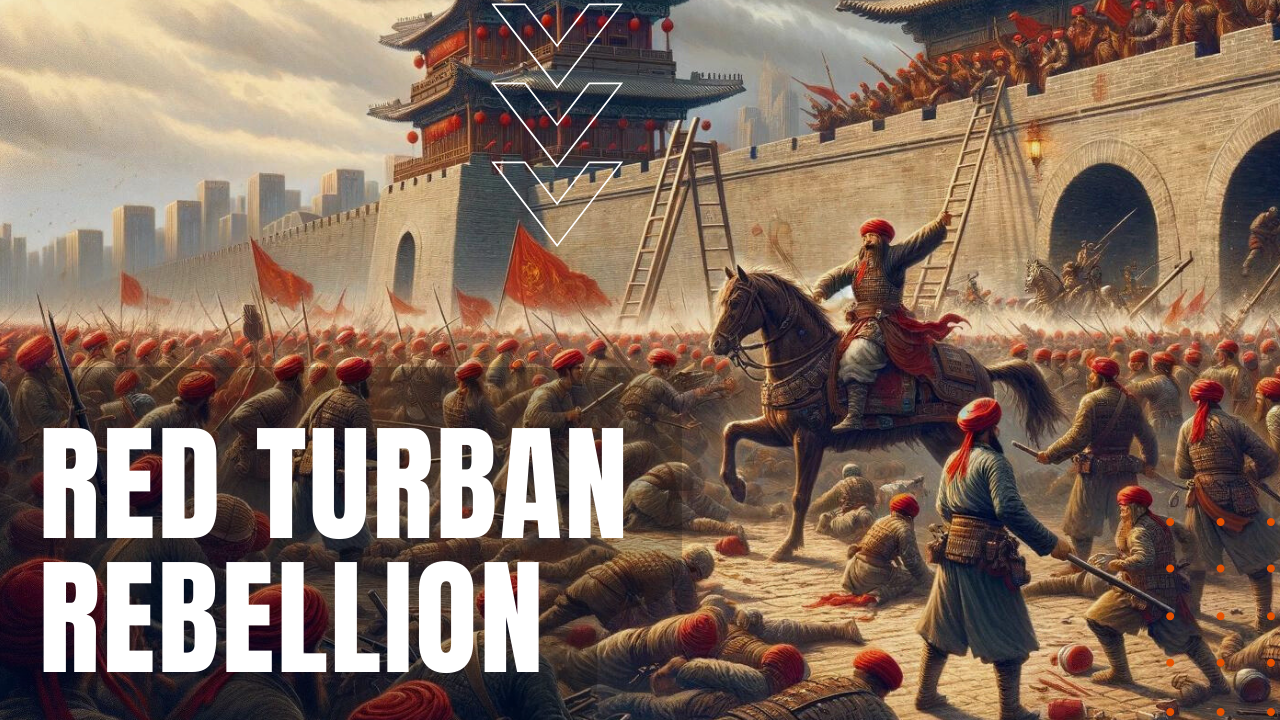The Red Turban Rebellion

After thousands of years spent warding off invasion attempts by Mongol tribes from the north—including a 2,500-year construction project now known as the Great Wall of China—during the late 12th and early 13th centuries, Genghis Khan unified the tribes of Mongolia, pressing down upon China until Beijing fell in 1215. His son Kublai Khan would complete the conquest of China by 1279, establishing the Yuan Dynasty, which severely segregated the Han Chinese majority into a life of repression and mass deprivation.
Mongols Only
Appointing Mongols to top government positions, Han Chinese were not allowed to possess firearms or intermarry among the three groups of Mongols in control, and after Kublai Khan’s death in 1294, conditions worsened under a string of incompetent emperors from 1320 to 1329. Due to the overwhelming expense of maintaining military control over such a vast empire, additional taxation fell mostly on the Han, who constituted the bottom rung of Yuan social structure. Rampant inflation was to follow, combining forces with a string of famines and constant flooding of the Yellow River, leading to the rise of a secret society of Han peasants known as the Red Turbans or Red Scarves, whose goal was to overthrow the Mongols and return the Song Dynasty to power.
Blended Ideology
Forming their ideology around elements of the Buddhist White Lotus sect, along with Manichaeism, Confucianism and Daoism, the Red Turban Rebellion began sporadically along the coast of Zhejiang, gaining momentum and widespread support under the charismatic and messianic leadership of Buddhist mendicant Zhu Yuanzhang in 1352, whose Red Turban Army would successfully take the city of Nanking in 1356. Announcing his intention to found his own dynasty, Zhu named himself Duke of Wu in 1361, defeating his rival Chen Youliang in 1363 at the Battle of Lake Poyang, one of the largest naval battles in world military history.
Ming Dynasty Begins
On January 23rd, 1368, Zhu proclaimed the Ming dynasty, meaning bright or radiant, naming himself emperor Taizu or the Grand Ancestor, posthumously renamed the Hongwu Emperor for his vast military achievements. As his support and popularity exploded across China, by 1382, China was once again unified under the Ming, while the Mongols were pushed north of the Great Wall, making the Red Turban Rebellion, a redefining moment in China’s long and turbulent history.
